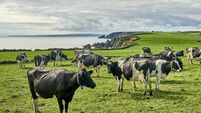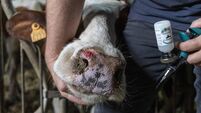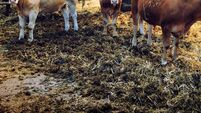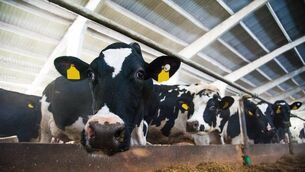Farmers not prepared to take any more milk-price cuts, says IFA dairy chairman
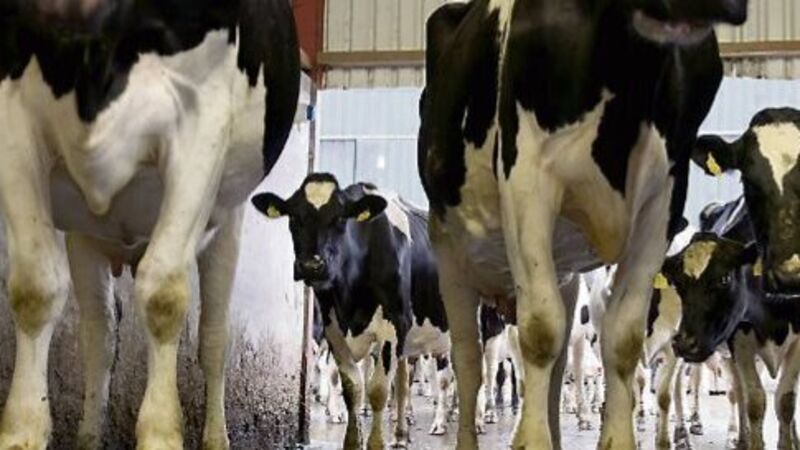
Their message is clear: They cannot take any more milk-price cuts, and expect their co-ops to look to internal savings and even lower their margins if necessary.
Dairy farmers have suffered 11c/l worth of milk- price cuts in the last 13 months, from about 39c/l incl VAT last April 12-months to 28c/l incl Vat for May 2015. That’s a 28% cut in price, but a 78% cut in margin. This is what we mean when we speak of extreme volatility.
Teagasc predicts production costs for 2015 at 25c/l, excluding the remuneration of the farmers’ own labour. Should the May average producer margin over costs persist across 300,000 litres of annual production, it would amount to just €9,000. There is no way this can remunerate the farmer’s labour and allow for the cash-flow challenges of superlevy, on-farm investment repayments, tax liabilities and contributions to their co-op’s investment plans.
Any further milk price cuts would leave farmers in a serious loss-making situation. At the Moorepark Open Day earlier this month, it was clear that dairy farmers rightly remained positive for the long term, but they were concerned about the absolute need for sustained profitability.
Farmers were very clear that co-ops cannot bank, to fill the new processing capacity, on farmers chasing cashflow, continuing to produce milk without a margin. The market turnaround is a matter of ‘when’, not ‘if’. Demand remains good from emerging countries, though at reduced prices, and global milk supplies remain ahead of last year — but with growth slowing.
The continued absence of China and Russia from the market — at least for European traders — is also dampening down the situation.
However, a rebalancing of markets could happen quite promptly with the current heatwave in Europe, the drought in France and California, and the fact that New Zealand farmers are slowing output, currently receiving prices 20% below production costs.
Also, while the Russian ban has been extended, the product destined to Russia out of Europe has found alternative destinations. EU exports have been increasing apace in 2014 and into 2015, boosted by the weak euro. And all market analysts expect China to return to more normal trading patterns over the coming months.
The long-term outlook also remains positive, with the EU Commission, the OECD and Rabobank still predicting 2% to 2.5% annual grow in global dairy demand into the middle of the next decade.
In this context, it is vital that co-op board members meeting to decide the June milk price would stop the slide. They must now turn their attention to internal savings, improve their selling, and leverage fully the value of our international brands (Ornua’s Kerrygold and Bord Bia’s Origin Green).
In recent weeks, Fonterra Co-op in New Zealand and Friesland Campina Co-op in the Netherlands have launched major cost-cutting programmes.
After recent major investment, it is legitimate for farmers to expect that their processing co-ops would now refocus on cost cutting and consolidation.
IFA campaign to lift the EU ‘safety net’ For several months now, IFA has been building a convincing case to remind the EU Commission of its legal duty under CAP legislation to monitor market and production costs and adjust intervention prices to provide a ‘safety net’ or market floor more fit for purpose.
Announcing such a review immediately would send a powerful message to the market, without running the risk of making intervention attractive.
Meetings with the Minister for Agriculture and the EU commissioner have already taken place, with more being planned. The IFA is also lobbying the Government TDs and MEPs on this issue, supported by EU farm organisation COPA and the European Parliament.
Farmers will meet the challenges of the post-quota era, but will legitimately expect co-ops and their fellow farmers on co-op boards to live up to the co-op ethos in which the farmer does not shoulder alone the burden of poor market returns.

